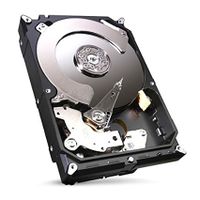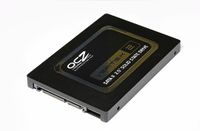We are still actively working on the spam issue.
Storage devices
Here you will find info on the various devices which can store your data.
Contents
Primary Storage
Hard Disk Drive
A Hard Disk Drive (often abbreviated HDD) is a data storage device used for storing and retrieving digital information using one or more rigid ("hard") rapidly rotating disks (platters) coated with magnetic material. Invented in 1972 by IBM under the name "Smart Drives", hard drives work by a magnetic head on an acutator arm "inscribing" (or writing) data to the platter. Think of someone writing in a book, where the pen is the magnetic head and the platter is the paper. Data is accessed in a random-access manner, meaning that individual blocks of data can be stored or retrieved in any order rather than sequentially.
The CD was invented in roughly the same time period. When it was invented, it held more data than a Hard drive. Now it is the complete reverse.
For data security, Fucko and Encryption might be of use to you.
For securely wiping data, Data Destruction might be of use to you as well.
Solid State Drive
A Solid State Drive (often abbreviated SSD) is a data storing device that stores data via flash memory as opposed to a hard drive, which uses a physical spinning disc. They can be found in both desktops and laptops. They have recently risen in popularity due to their rapid loading times. However, they are still pretty new, and because of this they are more susceptible to failures and problems than the tried and tested hard drives.
Generally, instead of being used to store all of a user's data, solid state drives are used to store the operating system, while a hard drive is used to store additional data. Files which require frequent loading (e.g. commonly used applications/games) are best suited to an SSD, whereas ocasionally accessed files (e.g. your pirated movie collection) will just waste the precious SSD space.
Solid state drives that hold the 100-500GB range tend to be more stable than the 500GB and up models.
Encryption and sanitization is an issue on SSDs as operating systems can never be certain where their data is being written to. The firmware on SSD drives includes wear levelling, which both extends the life of the drive and abstracts the physical location of any data stored.
Secondary Storage
External Hard Drives
If you want an external drive for storing or backing up your data, it is actually wise to instead purchase a internal hard drive an and external case for said drive. The reason being is because most external drives come pre-installed with unneeded bloatware, such as cloud sync software, back-up programs and manuals. Plus external drives sometimes don't even function like normal drives. My old external drive doesn't even let me defragment it, which is pretty bananas.
So by purchasing a plain old internal hard drive instead, you avoid the hassle of dealing with things that you normally shouldn't have to deal with when buying new drives.

